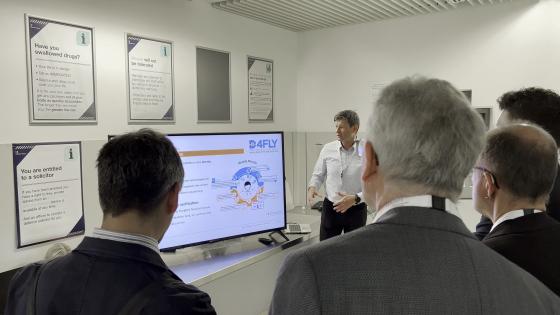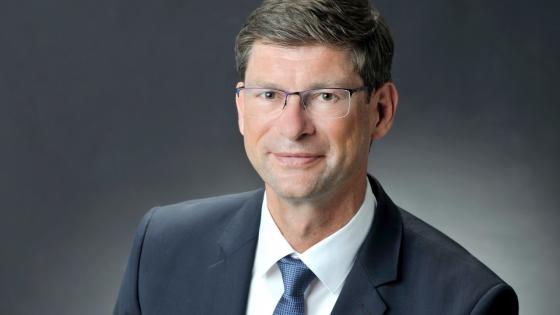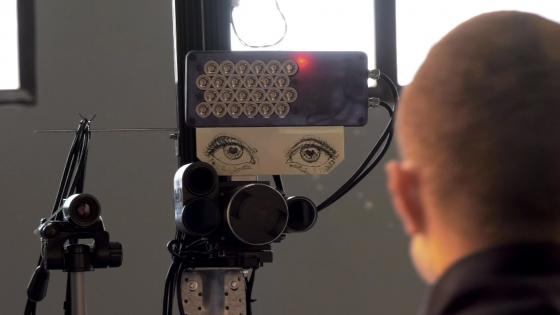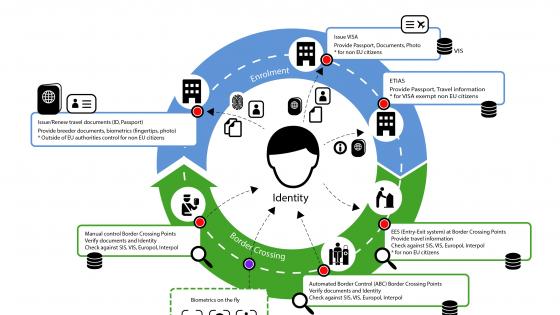Funded by the European Union, the D4FLY research project explored new technologies that will improve the border control process, explains Armin Reuter of Veridos
All over the world, the number of travellers at airports is increasing. It’s time to use innovative technologies to research the border controls of the future and make them suitable for practical use. The D4FLY research project was launched to enable a safe and comfortable travel experience.
The project focused on new solutions for efficient verification of travel documents and identities, including the use of advanced biometric technologies. The combination of these technologies was intended to drive acceleration of border controls while maintaining the highest security levels, helping authorities address both challenges.
Launched in 2019, with Veridos as the overall co-ordinator, the project brought together 19 different partners from 11 countries, including research institutes, universities, border control authorities and industrial companies. In August 2022, the consortium declared D4FLY successfully completed. The technologies developed and analysed in the project come with different maturity levels. Some are already operational with end-users, some are close to productisation and some still require additional basic research activities. The partners will continue the development on almost all of the project’s results.

The European Union’s D4Fly project, under the leadership of Veridos, brings together stakeholders from research, industry and practice
Reliance on digitalisation
Producing travel documents that are as forgery-proof as possible comes with many challenges, not least designing, selecting and implementing a set of security elements that are on the one hand very hard to forge, but on the. other, relatively easy to verify.
Different printing technologies, special colours and highly sophisticated optical effects sometimes also require technological upgrades on the part of the border control force. Automated document verification technologies, which have been developed in the D4FLY project, help border officers to verify security elements and detect potential document fraud.
The image in any ID document is the most common way of checking a person’s identity, not only during face-to-face verification. It also constitutes the basis of the face recognition technology used in automated systems like eGates. It is therefore essential that the images in passports are authentic.
In general, border controls and in particular the processes for establishing identity and verifying documents are becoming increasingly digital. Recent challenges, such as that presented by the COVID-19 pandemic, require further developments in these areas. The D4FLY project tackled these challenges by investigations and developments in the fields of presentation attack detection, morphing attack detection and new biometric technologies.

Armin Reuter is director innovation projects at Veridos
Biometric solutions
One of the D4FLY project’s priorities was the need to guide travellers through the necessary border controls, including identity checks, in the shortest possible time. For spatially limited locations, such as airports or cruise ship terminals, a so-called biometric corridor can be a suitable solution, using biometric technologies to identify the travellers while they move through a specific area. The technologies investigated in D4FLY included 3D facial recognition, iris verification and somatotype analyses, which uses a full body image to matcha reference image against a live image.
In the future, biometric corridors will guarantee border controls ‘on the move’; passengers will no longer have to wait in long queues. The entire traveller journey will be without multiple points of contact with staff and authorities. A prerequisite would be for travellers to voluntarily enrol their reference data, which the system then compares with the images acquired in the corridor. The D4FLY consortium developed a kiosk prototype for this purpose, through which biometric and biographic data can be captured.

Iris scans will play an important role as a verification feature in the future
Progress is also being made in the field of 3D face recognition. In a 3D image much more information is captured than in a classic 2D image, therefore new 3D face recognition technology has the potential to deliver an even higher level of accuracy. On the other hand, a 3D face image is more challenging to acquire, especially if an object is moving.
In the D4FLY project, good results have been achieved by combining innovative light field cameras from project partner Raytrix, which can capture a 3D image in a single shot, and newly developed matching algorithms, based on neural networks. Research on these innovative technologies paves the way to contactless border controls, shorter waiting times and secure identity.

A secure identity lifecycle from start to finish is the foundation for the use of new technologies in border protection
Security through technology
Border controls based on advanced technologies help make borders more secure and detect illegal activities such as forged documents or identity theft atan early stage.
Neural networks and machine learning are already in use as part of these solutions, which require large amounts of data for highly accurate results. The standards for collecting and using this data are currently under discussion among stakeholders across Europe.
Not only was the correct handling of the data and the compliance to the applicable data protection regulations constantly monitored over the course of the project, but special workshops, which external stakeholders were invited to join, were conducted in the course of the D4FLY project to assess the potential impact of deployment of these types of automated systems by border control, taking into account ethical, societal and legal perspectives.
